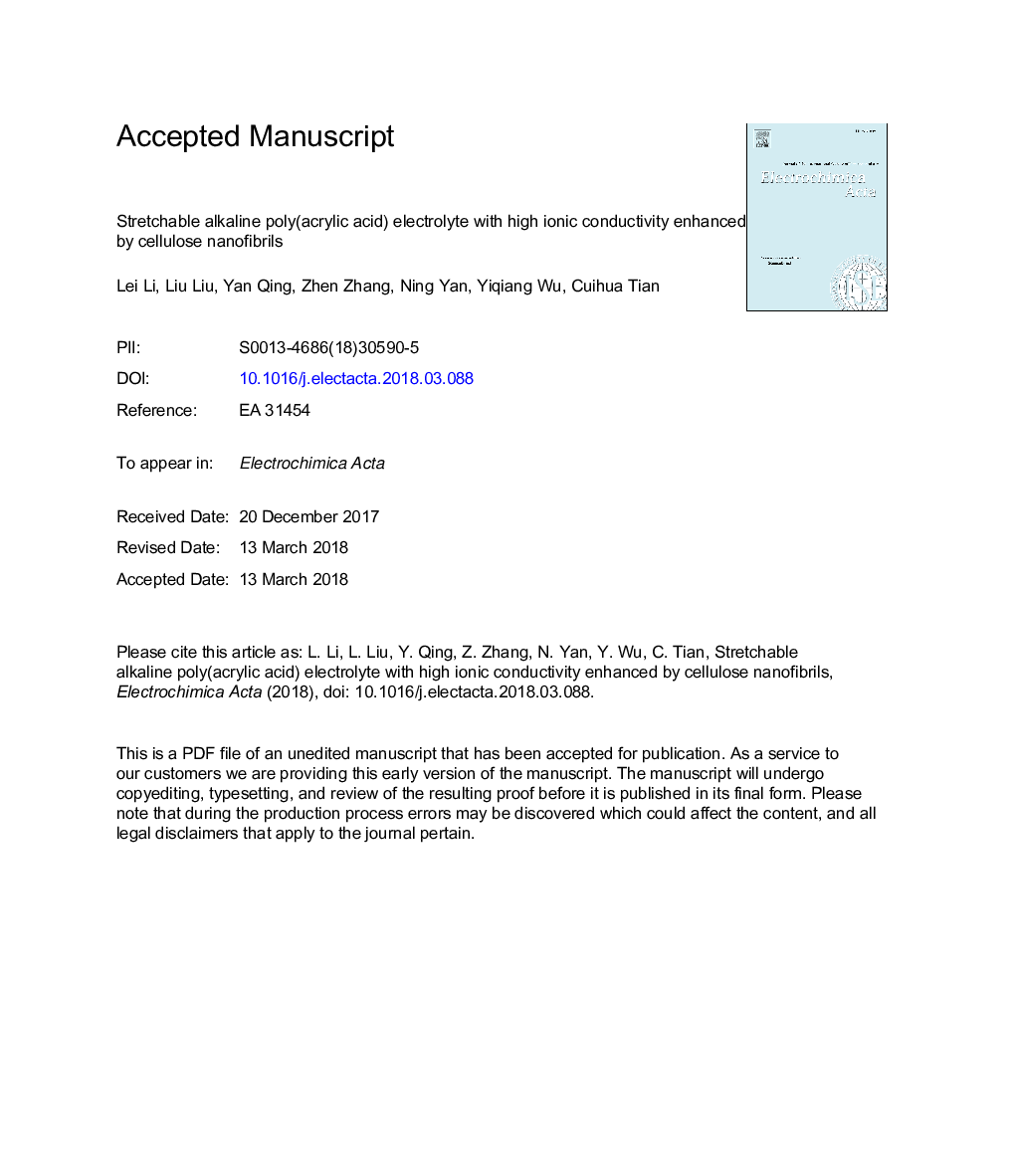| Article ID | Journal | Published Year | Pages | File Type |
|---|---|---|---|---|
| 6603448 | Electrochimica Acta | 2018 | 27 Pages |
Abstract
Although hydrogel electrolytes have attracted considerable attentions due to high water retention and low leakage, their vulnerability and low conductivity still pose challenges in large-scale applications. In this work, a mechanically strong and highly conductive poly (acrylic acid) (PAA) electrolyte reinforced by cellulose nanofibrils (CNFs) is developed via versatile blending followed by polymerization. As a result of physical entanglement and hydrogen bonding, the mechanical strength of the PAA electrolyte is enhanced from 0.656 to 1.875â¯MPaâ¯at a CNF loading of 3â¯wt%, and the dimensional swelling is suppressed to half of its original level. The ionic conductivity of the composite electrolyte is improved by 100% due to excellent ion-transfer paths created by the hydroxyl groups exposed on the surfaces of CNFs. Furthermore, the CNF/PAAs exhibit preferable elasticity and flexibility with the maximum elongation at break reaching greater than 600%. These electrolytes are able to maintain the initial ionic conductivity even after being stretched to 100% elongation for 500 circles. After assembling with an air cathode and an aluminum anode, the as-prepared Alâair battery show good discharging performance, demonstrating promises for applications in portable and flexible electronic devices.
Related Topics
Physical Sciences and Engineering
Chemical Engineering
Chemical Engineering (General)
Authors
Lei Li, Liu Liu, Yan Qing, Zhen Zhang, Ning Yan, Yiqiang Wu, Cuihua Tian,
